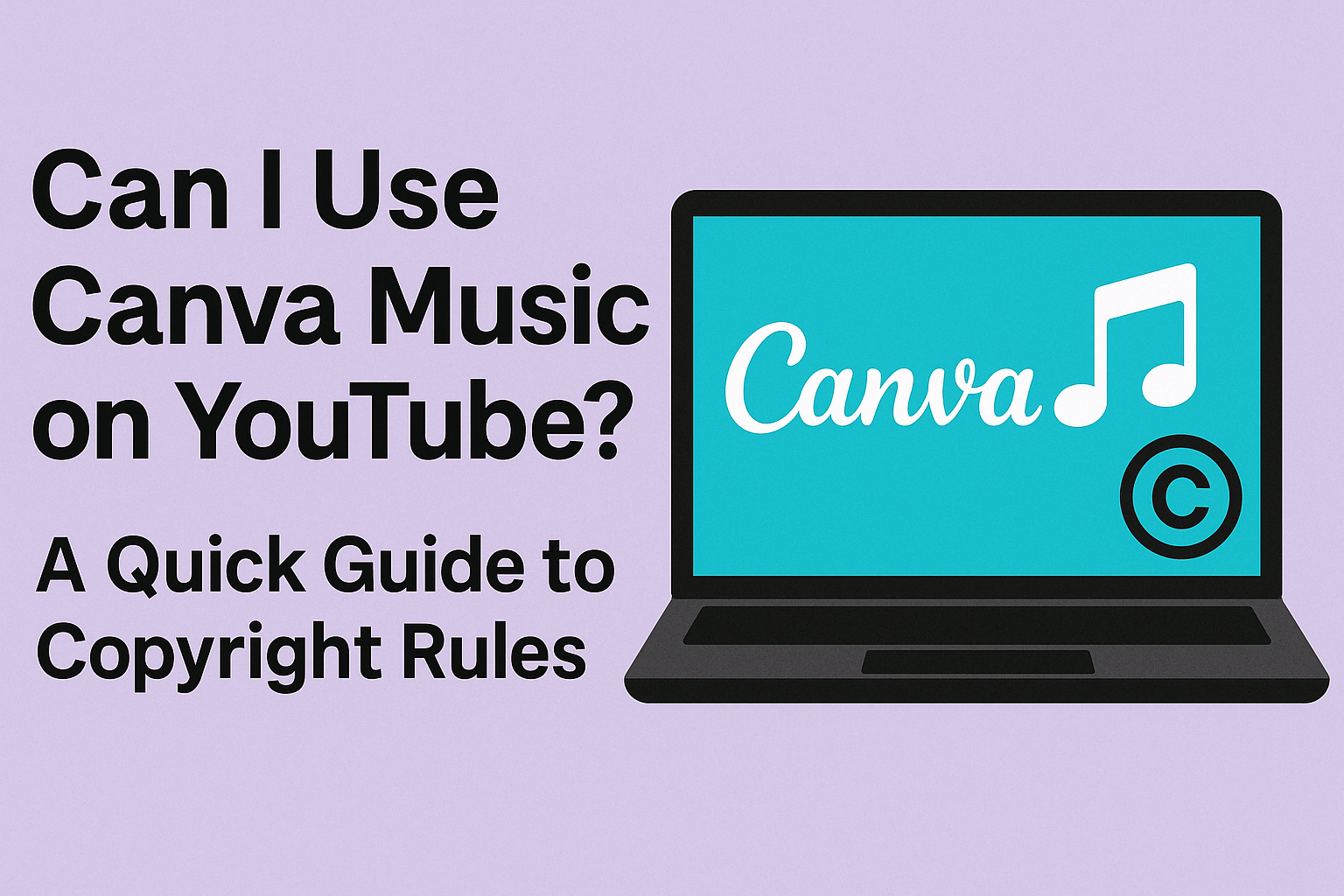Many creators wonder if they can use Canva’s music tracks in their YouTube videos.
The good news is that Canva does allow the use of its music for online platforms, including YouTube. This can be a great way to enhance videos and keep them engaging.
While Canva provides a variety of music options, it is essential to understand the rules about using this music. They do not allow the use of their tracks in traditional media channels like TV or radio, which could lead to copyright issues.
Understanding Canva Music Licenses
Canva offers various music licenses for its audio tracks.
Knowing these licenses can help users understand how to properly use music in their projects, especially when sharing content on platforms like YouTube.
Types of Canva Music Licenses
Canva provides users with different types of music licenses depending on their needs.
Users can access tracks under the Pro Content license or the Free Content license.
- Pro Content License: This license allows users to utilize paid music tracks for personal and commercial purposes. It grants rights for unlimited use but requires separate licenses for different designs.
- Free Content License: Available to all users, this license covers free audio tracks. Users can use these tracks in their projects, but they come with some usage limitations.
Regardless of which license a user chooses, understanding the specifics of what each license offers is essential for proper usage.
License Limitations and Permissions
Using Canva music comes with some important limitations.
Firstly, users can only utilize tracks within designs created on Canva’s platform. This means they cannot download the audio for use elsewhere.
Additionally, if a user wants to use a track in multiple designs, they must purchase a separate license for each one.
Also, while many tracks are usable for commercial purposes, others may have restrictions due to copyright. Users should always check individual track details to know what is allowed.
Being aware of these limitations ensures smooth use of music while adhering to licensing agreements.
Using Canva Music on YouTube
Canva music can enhance videos shared on YouTube, as long as users follow specific guidelines. Using licensed music helps avoid copyright issues, while proper attribution ensures credit is given to the original creators.
How to Legally Use Music in Your Videos
To legally use Canva music on YouTube, creators should first verify that the music is included in their license. Canva offers a variety of free and Pro music tracks that are cleared for use.
Users don’t have to worry about copyright strikes, especially if they stick to Canva’s licensed tracks. While free tracks are available, subscribing to Canva Pro unlocks a broader selection for enhanced video quality.
It’s crucial for users to check Canva’s licensing agreements to ensure that they are using the music within the permitted guidelines. Following these rules helps protect their content and keeps their channel in good standing.
Steps to Attribute Music Correctly
When using music from Canva, proper attribution can be essential. While it may not always be required, giving credit is a good practice.
To attribute music correctly, creators should include the title of the song and the artist’s name in the video description. This shows respect for the creators and helps others discover their work.
For example, a simple format would be: “Music: ‘Song Title’ by Artist Name.” Following this guideline can enhance the professionalism of the content and foster goodwill in the creative community.
By adhering to these steps, creators can enjoy using Canva music while maintaining their YouTube channel’s integrity.
Avoiding Copyright Issues on YouTube
When using music on YouTube, it is crucial to understand the copyright system and how to resolve any claims that may arise. This will help creators stay compliant while enjoying the benefits of using music in their videos.
Understanding YouTube’s Copyright System
YouTube uses a robust copyright system to protect creators’ rights.
If a user uploads a video featuring copyrighted music, the system can detect it and may issue a content ID claim. This can lead to various actions, such as monetization being redirected to the copyright holder or, in some cases, the video being taken down.
To prevent this, creators should use music they have licensed, such as tracks available on platforms like Canva. Linking an account and properly using licensed music reduces the risk of copyright claims and helps maintain creative freedom.
Resolving Copyright Claims
If a copyright claim occurs, it’s important to act quickly.
First, a user should review the claim details to understand what triggered it. This information can often be found in the YouTube Studio under the “Copyright” section.
Creators have several options for resolution. They can either acknowledge the claim and provide credit to the rights holder, mute the audio, or dispute the claim if they believe it’s incorrect.
Always ensure that music used in videos complies with copyright laws to minimize future claims and protect creative content.

